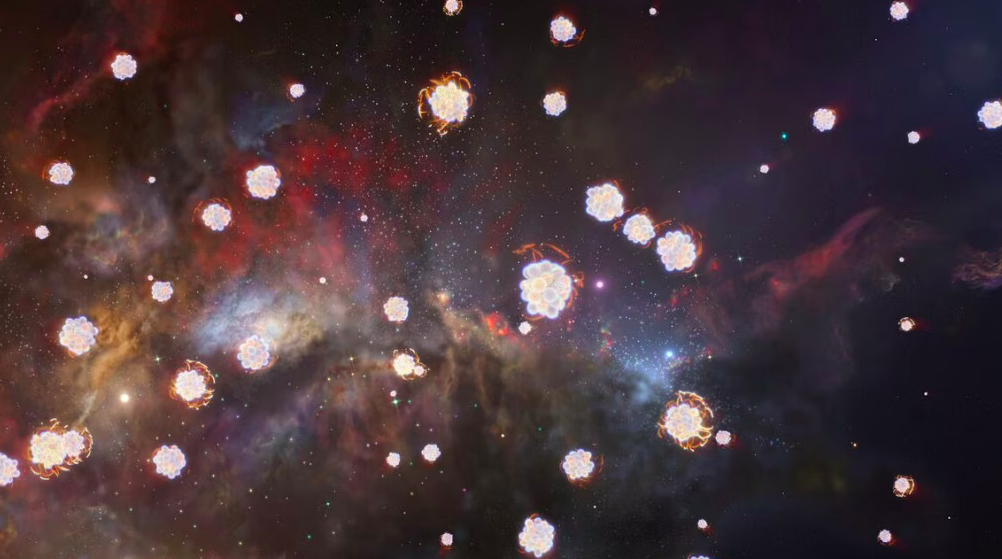
The recent discovery of footprints left by the explosions of the first stars that formed after the Big Bang brings us a step closer to understanding the history of the universe.
The findings come from a study carried out by an international group of scientists from the Paris Observatory, the University of Florence and the Italian National Institute for Astrophysics (INAF), with results published in The Astrophysical Journal.
For the first time ever, the traces of these explosions have been identified in very distant clouds of diffuse gas,dating back 11 billion years, observed by the researchers using the Very Large Telescope (VLT) of the European Southern Observatory (ESO) in Chile.
The research stemmed from Andrea Saccardi’s PhD thesis, supervised by Stefania Salvadori, Florence University professor, and Valentina D’Odorico, INAF researcher, co-authors of the study.
“The first stars were very different from the ones we see today. Born in gas clouds containing only the simplest chemical elements (hydrogen and helium), they were more massive than our sun and died quickly in explosions known as supernovae. These explosions enriched the surrounding gas with the first heavier elements which formed in the cores of the first stars. Second-generation stars were born out of that enriched gas. Some of them, like celestial fossils, still inhabit our own and nearby galaxies,” Salvadori explained.
The study shows that primordial stars can be studied indirectly by detecting the chemical elements they dispersed in the surrounding environment after their death, such as carbon, oxygen, magnesium and others, which differ in quantity and quality depending on the mass and explosion energy of the first stars and supernovae, respectively.
The scientists used the X-shooter spectrograph of the Very Large Telescope, which – by splitting light into an extremely wide range of wavelengths, or colours – makes it possible to identify many different chemical elements.

